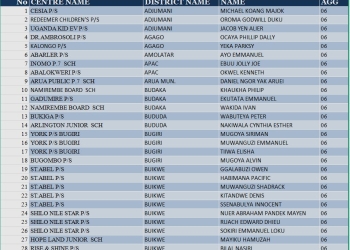
Over the last several years, a concerted effort has been to transform Uganda’s capital into a smart city. The city of Kampala has engaged in ambitious and forward-thinking initiatives that aim to utilise 4IR technologies to improve efficiencies, digitisation of public services, and the overall lives of its citizens.
A five-year strategic plan, approved by the National Planning Authority (NPA) in October 2022, facilitates five themes: promoting economic growth, quality of life, city resilience, governance and citizen engagements, and institutional capacity development. This plan is set to manifest in several ways, such as building a traffic control centre and upgrading traffic signal junctions. Just last year, the Kampala Capital City Authority (KCCA) partnered with the private sector to install smart poles equipped with LED lights and telecom infrastructure, creating a platform of interconnectivity while upgrading street infrastructure at the same time.
With the right implementation and systems that leverage networks and data, Kampala can be ground zero for change and become the benchmark for other urban areas across East Africa.
What makes a city “smart”?
While the provision of ICT infrastructure is a key measure of any city, a smart city uses ICT to increase its operational efficiency and strengthen the provision and quality of government services. Characteristics of smart cities include a strong sense of urban planning, technology-based infrastructure, and decision-making based on the abilities and data output of that infrastructure. Deployed solutions do not just influence urban activity, they also inform how urban areas grow and develop.
Africa is already home to several smart cities, as listed in the IMD Smart City Index Report for 2023. These include Nairobi, Cape Town and Lagos, with smart city criteria based on civil structures – health and safety, mobility, activities, education and employment opportunities, and governance – and technologies applicable to each of those structures.
For a city like Nairobi, priority areas, as identified by city survey respondents, include basic amenities and security, which are comparable to the ambitions of Kampala as a smart city and the deployment of required ICT infrastructure. But, before we can start to build smart cities, we need to invest in the necessary tools and resources.
Data, IoT, and edge computing
Big data and the growth of IoT have had a critical impact on the feasibility of smart cities. The ability to gather and process large amounts of data from multiple sources means city officials and departments gain valuable insight into each of the services it offers and the facilities it operates, as well as citizen trends and behaviour that help determine focus areas and action plans. This data is then transmitted via wired or wireless Internet connectivity and stored in the cloud and local data centres, where operators have direct access.
Edge computing also has a role to play. Ideally, IoT devices that smart cities deploy should be able to process gathered data at the source, resulting in that computation being the only data sent to a centralised location. This minimises the amount of data being transmitted, putting less pressure on networks.
Digitised public services
As the private sector has had a hand in raising the standard for digital customer experiences, the public sector has to follow suit. There is also an element of trust to consider. Surveys have shown residents who are satisfied with the provision of public services are more likely to trust governments overall than those who aren’t. At the same time, public digital platforms and services have to be secure, incorporating security mechanisms like firewalls to protect data, networks, and their users.
What do digitised public services look like? For instance, citizens can apply for an identity document or pay their taxes on a single, centralised digital platform, serving as a customer portal and information repository for government departments that can access and share the necessary information. Government officials can implement applications to help reduce crime, mapping high-density areas and enabling quick emergency response times.
Other applications can improve public transportation, providing citizens with real-time commute periods and notifying them of any delays. And, finally, digital public channels can encourage social interaction, building on a sense of community and connecting urban dwellers via a common digital experience.
Though the focus may be more on achieving the delivery of basic services, Uganda has the potential to make all these use cases a reality. It starts with the basic infrastructure, Internet connectivity, and providing cloud-based managed services. A connected, digital ecosystem can put Kampala and its citizens at the forefront of digital transformation.
The writer, Patrick Ndegwa, is a Business Sales Lead for SEACOM East Africa
















